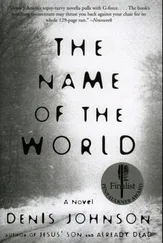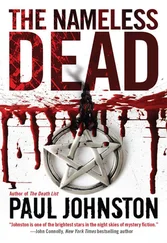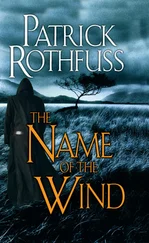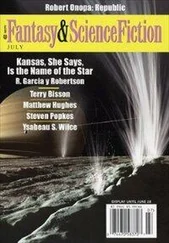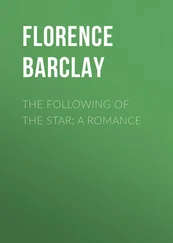Maureen Johnson - The Name of the Star
Здесь есть возможность читать онлайн «Maureen Johnson - The Name of the Star» — ознакомительный отрывок электронной книги совершенно бесплатно, а после прочтения отрывка купить полную версию. В некоторых случаях можно слушать аудио, скачать через торрент в формате fb2 и присутствует краткое содержание. Жанр: Старинная литература, на английском языке. Описание произведения, (предисловие) а так же отзывы посетителей доступны на портале библиотеки ЛибКат.
- Название:The Name of the Star
- Автор:
- Жанр:
- Год:неизвестен
- ISBN:нет данных
- Рейтинг книги:4 / 5. Голосов: 1
-
Избранное:Добавить в избранное
- Отзывы:
-
Ваша оценка:
- 80
- 1
- 2
- 3
- 4
- 5
The Name of the Star: краткое содержание, описание и аннотация
Предлагаем к чтению аннотацию, описание, краткое содержание или предисловие (зависит от того, что написал сам автор книги «The Name of the Star»). Если вы не нашли необходимую информацию о книге — напишите в комментариях, мы постараемся отыскать её.
The Name of the Star — читать онлайн ознакомительный отрывок
Ниже представлен текст книги, разбитый по страницам. Система сохранения места последней прочитанной страницы, позволяет с удобством читать онлайн бесплатно книгу «The Name of the Star», без необходимости каждый раз заново искать на чём Вы остановились. Поставьте закладку, и сможете в любой момент перейти на страницу, на которой закончили чтение.
Интервал:
Закладка:
“For the next few days, Callum and I will be keeping an eye on you,” he said. “One of us will always be around. And remember, you have to say she stepped out into the road and didn’t see the car.”
Claudia threw open the door before Stephen hit the buzzer. I never thought I’d be happy to see her, but there was something reassuring about her indomitable presence. She checked me over with what seemed like genuine concern, then sent me upstairs while she spoke to Stephen. I gave him a final nod of good night from the steps.
Jazza was awake. Every light in our room was on, including my bedside light. The moment I stepped in the door, she sprang up and threw her arms around me.
“Is she okay?”
“I think so,” I said. “Well, she’s awake. She has some broken bones.”
“What happened? You went to the toilet, and you never came back.”
“I was just feeling a little sick,” I said. “I went out for some air. I walked around the block. And . . . she followed me. She was on the phone. I guess she . . . she just didn’t see the car.”
“God, I feel so terrible. All those things I said about her. But she really is sweet. Oh, God, but she really doesn’t pay attention, does she? Are you all right?”
“Fine,” I lied. I mean, I was physically intact, but inside, I was quaking.
“I warmed your cheese for you,” she said, pointing at the radiator.
“I love it when you talk dirty.”
I was in no shape to eat any Cheez Whiz, so I went right to my bureau to get out my pajamas.
“Where did you get those clothes?” Jazza asked.
“Oh . . . they lent them to me.”
I quickly removed the Eton sweats and shoved them into my laundry bag.
“The police lent you clothes from Eton?”
“I guess they had them around or something.”
“Rory . . . you leave the party and Boo follows, then Boo gets hit by a car . . . I don’t know. I don’t want to pry, but . . . what’s going on?”
For just a second, I thought about telling her. I wanted her to know. I imagined all the words coming out of my mouth, the whole ridiculous story.
But I couldn’t do that.
“It’s all just . . . a lot of bad luck.”
Jazza slumped a bit. I wasn’t sure if it was relief or disappointment. Luckily, we didn’t have to talk about this anymore, because there was a knock and pretty much everyone from the hall came in to get the news.
When I closed my eyes that night, two things ran through my mind: the image of Boo on the street, and the Ripper himself.
No one understood. Not my classmates. Not my teachers. Not the police.
Jazza slept. I didn’t.
They probably would have let me skip class the next morning, but there was no point. I’d been in my bed for hours, doing nothing but staring at the ceiling and listening to Jazza breathe and trying to distract myself from the endless, terrifying thoughts. At six, I got up and showered. I was sticky with sweat, a sweat that had nothing to do with being hot and everything to do with being awake so long. I yanked my uniform from the end of the bed, pulled a shirt from a hanger. I couldn’t bother putting my hair up, or even brushing it. I just smacked it down with my hands.
I skipped breakfast and went right to art history. No one hid their interest when I walked into the room. I’m not sure if it was the news about Boo or my general appearance. At home, people would have asked. People would have been crawling all over me for information. At Wexford, they seemed to extract what they wanted to know by covert staring.
Mark, a Wexford outsider, was oblivious to the drama of the night before. “Today,” he said cheerfully, “I thought we’d cover something topical. We’re going to talk about depictions of violence in art. And where I’d like to start is by taking a look at an artist called Walter Sickert. Sickert was an English impressionist who painted urban scenes in the late nineteenth and early twentieth centuries. Sickert is often brought up when discussing Jack the Ripper. There are a number of reasons for this . . .”
I rubbed my head. There was no escaping the Ripper. He was everywhere.
“Sickert was obsessed with the Jack the Ripper crimes. He believed he had rented a room formerly occupied by Jack the Ripper, and he made a painting of it entitled Jack the Ripper’s Bedroom. Some people even believe that Sickert was Jack the Ripper, but I’m not sure those claims have much to do with reality.”
A painting appeared on the screen. It was a dark room, a bed in the middle. Plain, brooding, dark.
“Another reason,” Mark said, “was the fact that in 1908, Sickert painted a series of paintings based on a real-life murder, the Camden Town Murder. The murder had taken place the year before, and the scene was similar to that of the last murder victim in the Jack the Ripper murders, Mary Kelly—certainly in the setting.”
A click. A new painting. A woman lying on a bed, naked, her head turned away. A man sitting on the edge of the bed, mourning over what he had done.
“Art of a murder scene,” Mark said. “Death is a common theme in painting. The Crucifixion has been painted thousands of times. The executions of kings. The killings of saints. But this painting is more about the murderer than the victim. It even encourages us to feel mercy for him. This painting from the series is called What Shall We Do for the Rent ? ”
Mark went on, telling us all about English impressionists and the brushstrokes and the light. I just kept staring straight ahead at the still figure on the bed—the shaded, almost forgotten figure of the woman.
I didn’t have any mercy for the killer.
An hour and a half into class, we had a bathroom break. I was the first one out the door.
“I’m not going back in there,” I said to Jerome. “I don’t know if you can . . . prefect-arrest me or something. But I’m not going back.”
“I’m not going to prefect-arrest you,” he said. “But I should walk you back to your building. I’ll tell Mark you were ill.”
So Jerome walked me the thirty or so feet back to Hawthorne. We had just about reached the door when he stopped.
“Only a few more days,” he said. “It’s almost over.”
Jerome hesitated, then put his hand on the side of my head, leaned down, and kissed me.
When I looked up, I just caught sight of Stephen. He was sitting on a bench in the square, pretending to read. He wore a sweater and jeans and a scarf, no uniform. He immediately removed and played with his glasses, turning away from the sight of the kissing. But he had seen it, and that felt weird. I stepped away from Jerome.
“Thanks,” I said. I meant for the walk back to the building, but it sounded like I meant the kiss.
“Did you see the thing on the news?” Jerome asked. “About the message? How everyone thinks it’s from the Bible, and it might be about terrorism? I don’t think it is—neither do any of the people on the Ripper boards. The name of the star . . . it’s not from the Bible—he means the name Jack the Ripper . That’s the name of the Star.”
“What?”
“Jack the Ripper never called himself Jack the Ripper. The name came from a letter sent to the Central News Agency. It was a hoax, and almost definitely written by a reporter from the Star newspaper. That was the paper that made the Ripper famous. The whole thing was kind of a media creation. When he says ‘the name of the star is what you fear,’ he means it—everyone’s afraid of this idea of the Ripper, this thing that gets bigger and bigger because of the news. And he’s the star of the show, right? It’s a joke. It’s a sick one, but it’s a joke. It’s bad, but . . . it’s not terrorism or anything. At least, I don’t think so. If that helps.”
Читать дальшеИнтервал:
Закладка:
Похожие книги на «The Name of the Star»
Представляем Вашему вниманию похожие книги на «The Name of the Star» списком для выбора. Мы отобрали схожую по названию и смыслу литературу в надежде предоставить читателям больше вариантов отыскать новые, интересные, ещё непрочитанные произведения.
Обсуждение, отзывы о книге «The Name of the Star» и просто собственные мнения читателей. Оставьте ваши комментарии, напишите, что Вы думаете о произведении, его смысле или главных героях. Укажите что конкретно понравилось, а что нет, и почему Вы так считаете.

